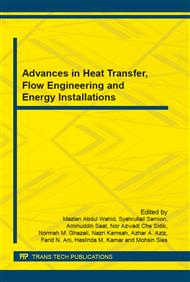p.575
p.580
p.585
p.591
p.596
p.601
p.606
p.612
p.618
Improving the Efficiency of Poly-Crystalline Photovoltaic Module Using Special Transparent Glass Covers
Abstract:
Photovoltaic systems have become recently the most attractive and promising technology compared with other solar energy conversion devices. Solar energy reaches the earth’s surface in wavelengths between 0.300 and 2.50 μm. Silicon based photovoltaic systems convert only the wavelength between 0.35 to 0.82 μm of solar energy to electricity. The rest of incident solar radiation will be converted to heat, which will increase the operating temperature of the device and decrease the output power and efficiency. Maintaining the operating temperature of the PV systems at low and desired value was the main emphasis of different researches through the last decades. In this research, a special transparent glass cover (STGC) was used in order to cool down the photovoltaic module and, therefore, increase the output power and the efficiency of the module. The result showed that STGC led to 2.75% improvement in open circuit voltage, 9.6% increase in short circuit current, 26.4% increase in the output power, and 3% increase in the efficiency of the module.
Info:
Periodical:
Pages:
618-622
Citation:
Online since:
January 2016
Authors:
Keywords:
Price:
Сopyright:
© 2016 Trans Tech Publications Ltd. All Rights Reserved
Share:
Citation:


